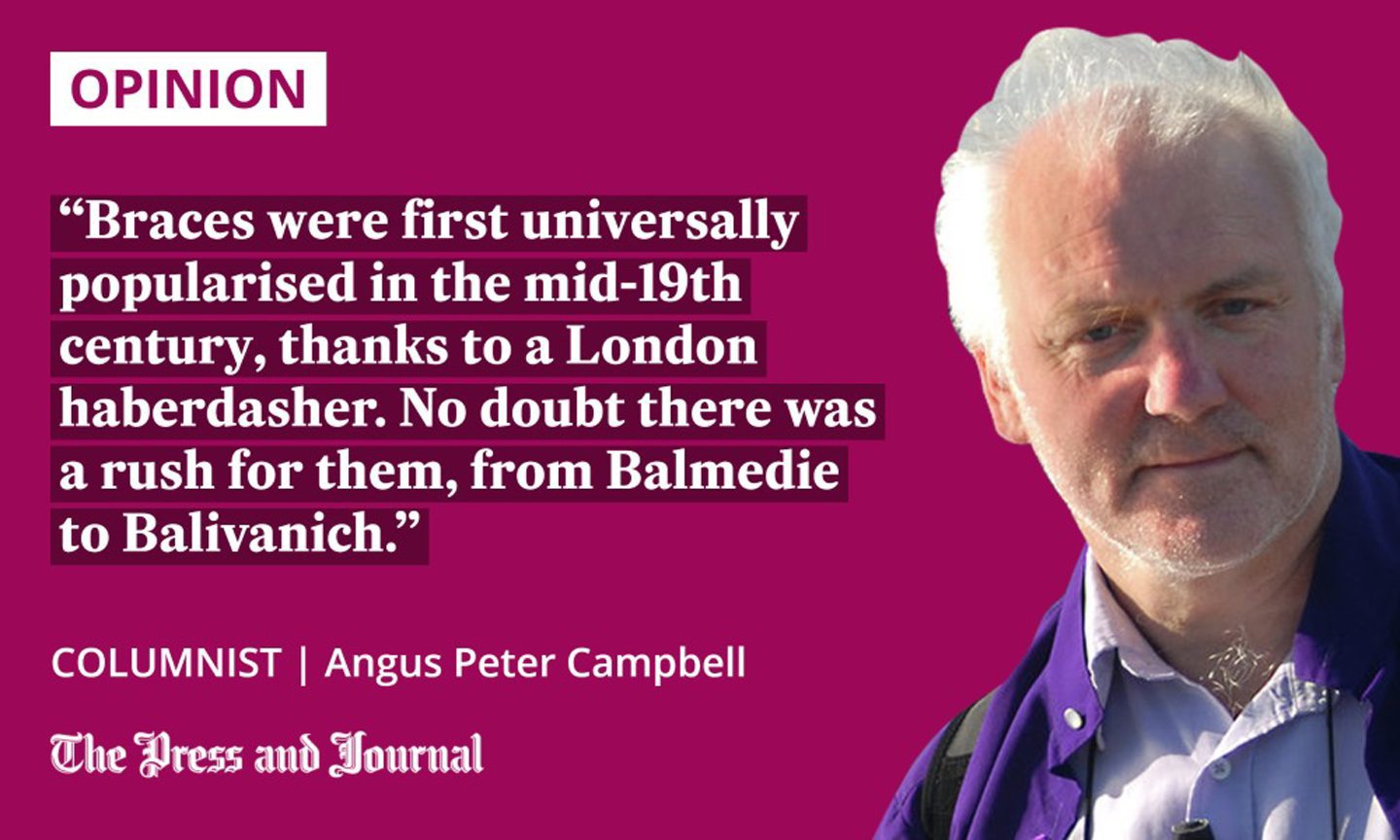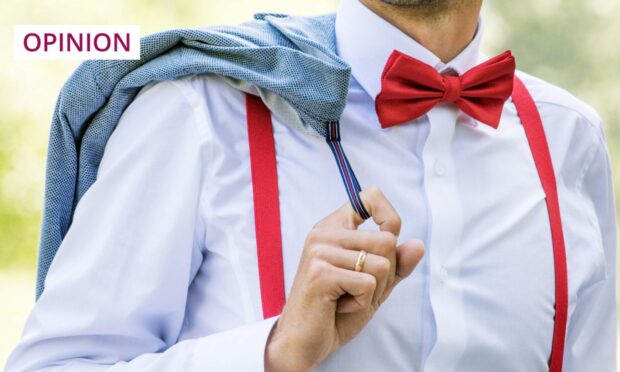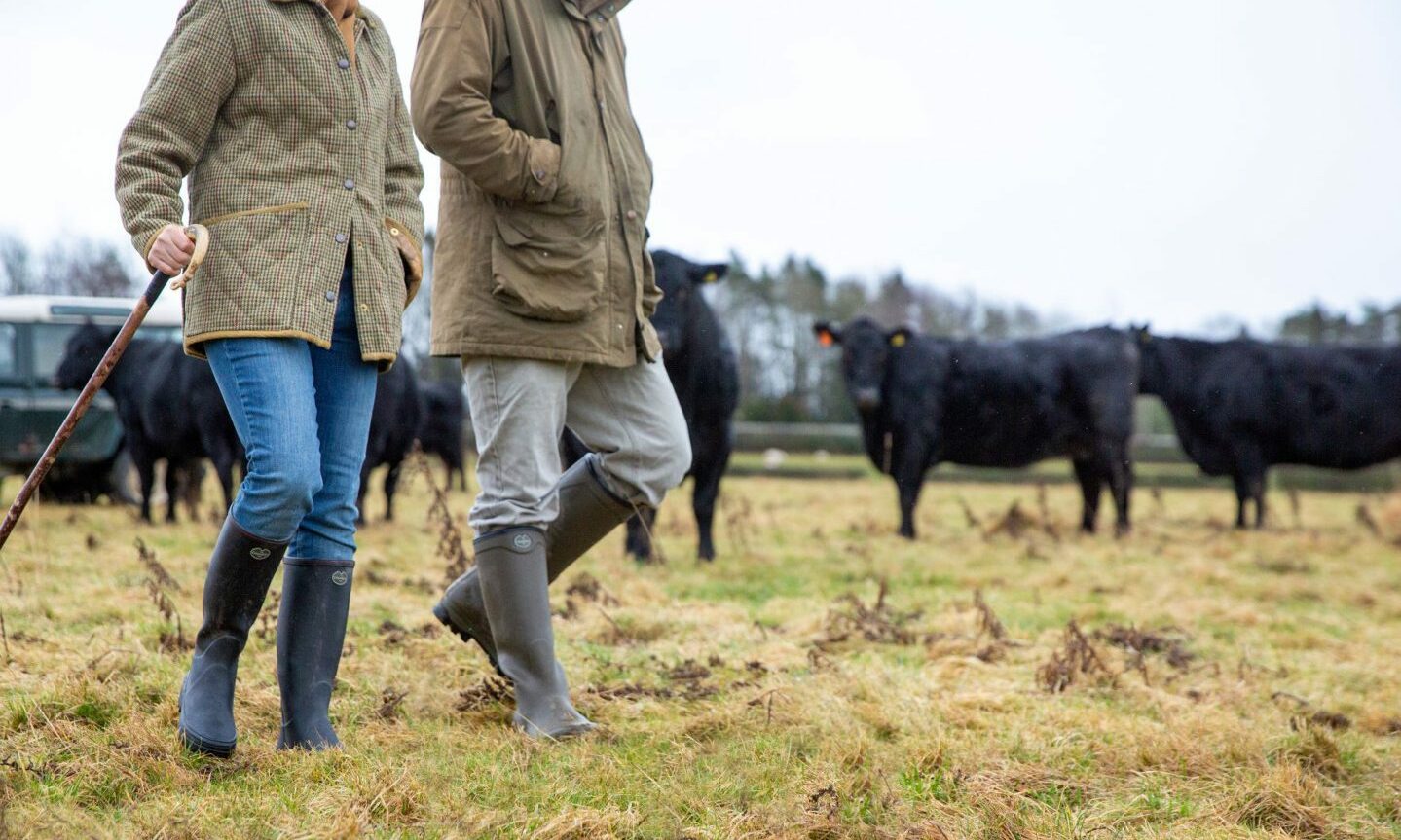What would a Victorian farmer teach us about fashion choices? Quite a lot, it turns out, writes Angus Peter Campbell.
Galaisean, we call them in Gaidhlig. Braces. The ones that hold your breeks up, not the ones that align your teeth.
The Gaelic word is, no doubt, connected with the Scots word, galluses. I’m not terribly sure where the word itself came from, though it’s supposed to be the plural variant of gallows, by which necks rather than breeks were hung, once upon a time.
When I remember my father, I remember him with galaisean, even in his joiner’s bib-and-brace. He would have bought them at the local store, where, as Henry Ford said about cars, you could get any colour, as long as it was black. Though my Dad’s braces weren’t. He had a small selection, and, I may be making it up, but I hope he had nice, stripy, posh ones for going to church on Sunday.

In America and Canada and Australia, they apparently call braces suspenders. Not that I would know, but as far as I can imagine, these ladies’ garments would likely have been ordered through the post from JD Williams or Oxendales, or one of those other racy magazines, like The People’s Friend, rather than requested over the counter along with your wellingtons and paraffin for the Tilley lamp.
Apparently, braces were first universally popularised in the mid-19th century, thanks to a London haberdasher, Albert Thurston, who advertised them as “a gentleman’s commodity” in 1822. No doubt there was a rush for them, from Balmedie to Balivanich.
It was that historic moment, when a practical item becomes an aesthetic choice. Like green wellies.
There’s always a moment when the functional becomes fantastic. In politics, for instance, the workaday prime ministers such as John Major and Theresa May now seem like giants when compared to their successors. Like an old Ford Anglia: absence makes the heart grow fonder.
Fashion advice from a Victorian farmer
I have a small collection of braces, and was thinking of starting to wear them, until the other day. I was advised otherwise, halfway through reading The Journals of a Methodist Farmer, 1871-1875, edited by Jean Stovin.
The journal is that of her grandfather, Cornelius Stovin, and is a fascinating, first-hand account, in the form of a diary, of the challenges and joys of being a tenant-farmer in the Lincolnshire Wolds in the middle of the 19th century.
The journals are an important source for agrarian history, in which I’m interested, but are also revealing in terms of the tensions Stovin had to contend with, both as a tenant and a capitalist farmer with a very solid evangelical Christian commitment.
How should he respond to the wage-increase demands of his farmhands, whom he considered as “friends”? And what about the wider political implications of the moves to establish trade unions?
And, as a greater believer in the high Victorian ideology of progress and technological development, which he embraced wholeheartedly, how was he to balance his basic Christian beliefs with the rapidly emerging science of Darwinism? It makes for interesting reading.
‘Throw aside braces’
But, one small passage caught my attention, maybe because it had nothing to do with turnips or theology, with crops or with church. And that was his diary entry of Thursday, January 25, 1872. I quote him:
“My mind and memory have experienced half a resurrection during the last fifteen days. By one or two suggestions thrown out by the Methodist missionary Mr Beckerlegge of Grimsby, my life on earth may have been lengthened by ten, fifteen or twenty years.
“One is that skin requires fresh air and that clothing should neither be air-tight nor should it fit close to the bodily shape. It should be loose and flowing. Hence on Sunday morning last I left off for the first time my under-flannel. Then incidentally in the current of conversation a reference was made to a button which had become unstitched upon his trousers. It was the main button, for it formed a substitute for braces.
‘The removal of the vest instead of giving me cold has refreshed me already, and there is a prospect of a new biographical era opening up before me’
“He referred to the advice which his Doctor has given him to throw aside braces as they tended to contract the chest, depress the lungs and hinder their healthy expansion, and prevent the legitimate appropriation of oxygen for the body’s purification.
“I propose at once to avail myself of this kind of physical freedom. My own body shall longer be subject to this binding force. The removal of the vest instead of giving me cold has refreshed me already, and there is a prospect of a new biographical era opening up before me.”
It was good, practical Christianity, based on the sound assumption that health is both spiritual and physical. It worked. He lived for another 49 years, until he was 91.
So, get rid of all those tight clothes, my friends, and find freedom in farming, fresh air and faith.
Angus Peter Campbell is an award-winning writer and actor from Uist












